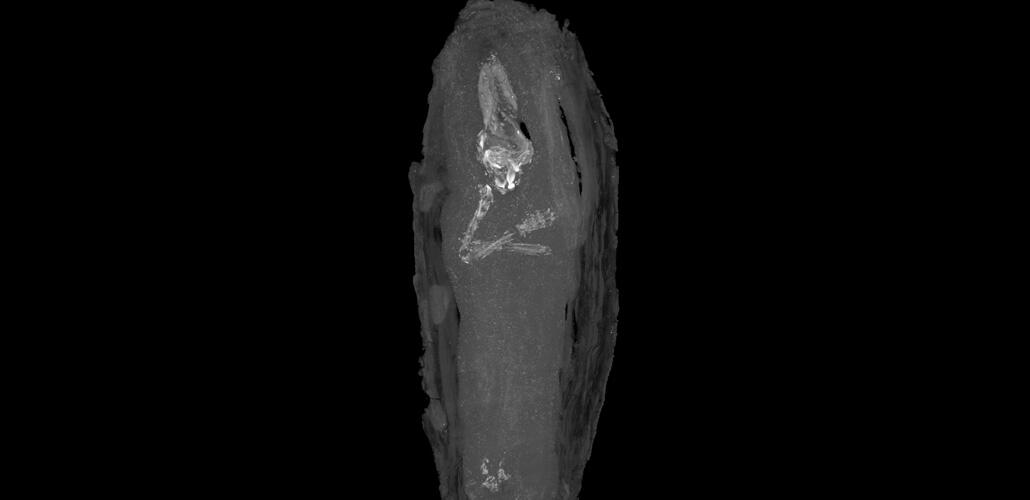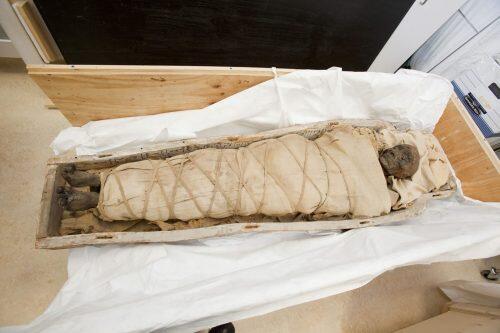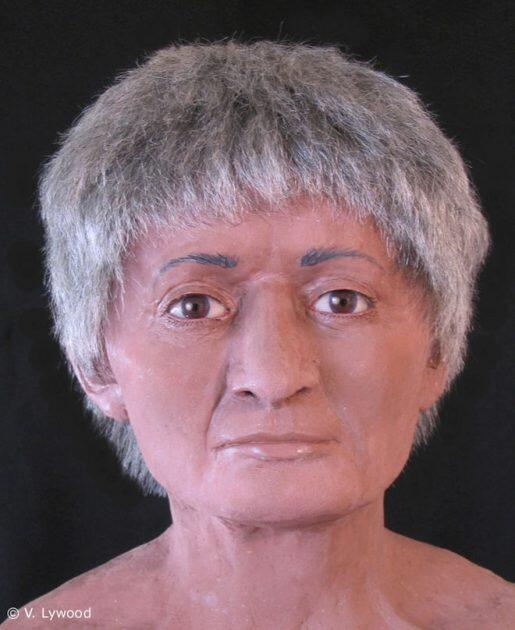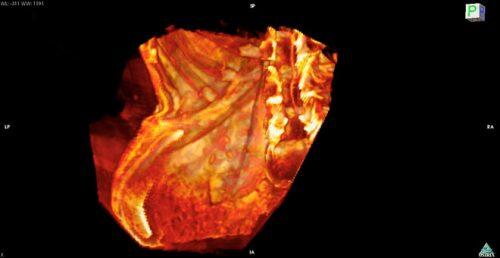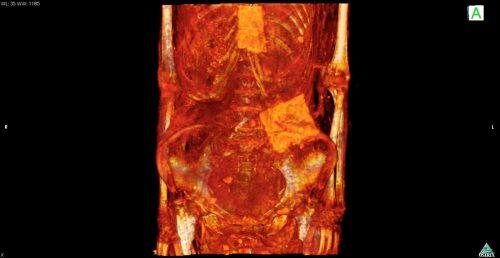A very young foetus was found more than a century ago, it holds the remains of the youngest Egyptian ever embalmed as a mummy on record, researchers in England.
They did a CT scan for the coffin which revealed that the coffin didn’t hold mummified internal organs, as researchers had suspected, but instead it contained the tiny mummy of a human foetus, according to the Fitzwilliam Museum in Cambridge, England. The mummified foetus was likely at only 16 to 18 weeks of gestation when it died, likely from a miscarriage, museum officials said.
“This landmark discovery … is remarkable evidence of the importance that was placed on official burial rituals in ancient Egypt, even for those lives that were lost so early on in their existence,”
museum researchers said in a statement.
In 1907, The British School of Archaeology originally uncovered the 17-inch-long (44 centimeters) coffin in Giza, and the Fitzwilliam Museum added the coffin to the museum collection that same year. The coffin is made from cedar wood and is a perfect miniature of a regular-size coffin from Egypt’s Late Period, and likely dates to about 644 B.C. to 525 B.C., museum researchers said. It even has “painstakingly small” carvings on it, the researchers added.
Photos of 1,700-Year-Old Egyptian Mummy Revealed:
For years, researchers assumed that the coffin held internal organs, which were routinely removed during the Egyptian embalming process. But curators found otherwise when they examined the coffin during preparations for the museum’s bicentennial exhibition, “Death on the Nile: Uncovering the Afterlife of Ancient Egypt,” which opened in February.
What they discovered in the coffin surprised them.
Credit: Copyright The Fitzwilliam Museum, Cambridge
The wood casket contained a small wrapped package, bound in bandages and covered with molten black resin. An X-ray of the coffin gave inconclusive results, but suggested that the container held a small skeleton. So, the researchers examined the tiny bundle with a micro CT scan.
Dr. Tom Turmezei, recently an honorary consultant radiologist at Addenbrooke’s Hospital in Cambridge, England, said:
“CT imaging has been used successfully by the museum for several projects in recent years, but this is our most successful find so far”.
“The ability of CT to show the inner workings of such artifacts without causing any structural damage proved even more invaluable in this case, allowing us to review the foetus for abnormalities and attempt to age it as accurately as possible.”
According to researchers, the CT scans showed that the foetus already had five digits on each of its hands and feet, as well as clearly visible long leg and arm bones. However, it’s unclear whether it was a boy or a girl, and it’s unknown what caused the miscarriage, if that’s what really happened.
The CT images also indicate that the foetus’ arms are crossed over its chest. This intricate positioning, along with the extraordinary detail on the coffin, suggest that ancient Egyptians placed great importance on the foetus’ burial, the researchers said.
“The care taken in the preparation of this burial clearly demonstrates the value placed on life, even in the first weeks of its inception,”
said Julie Dawson, head of conservation at the Fitzwilliam Museum.
This discovery isn’t the only one of its kind. King Tutankhamun’s tomb contained two mummified fetuses, which were estimated to be at 25 weeks and 37 weeks into gestation. Archaeologists have also discovered a few other examples of miscarried babies in ancient Egyptian burials, the researchers said.
The coffin is displayed for public at the Fitzwilliam Museum until the exhibit ends on May 22.
Source: Fitzwilliam Museum

